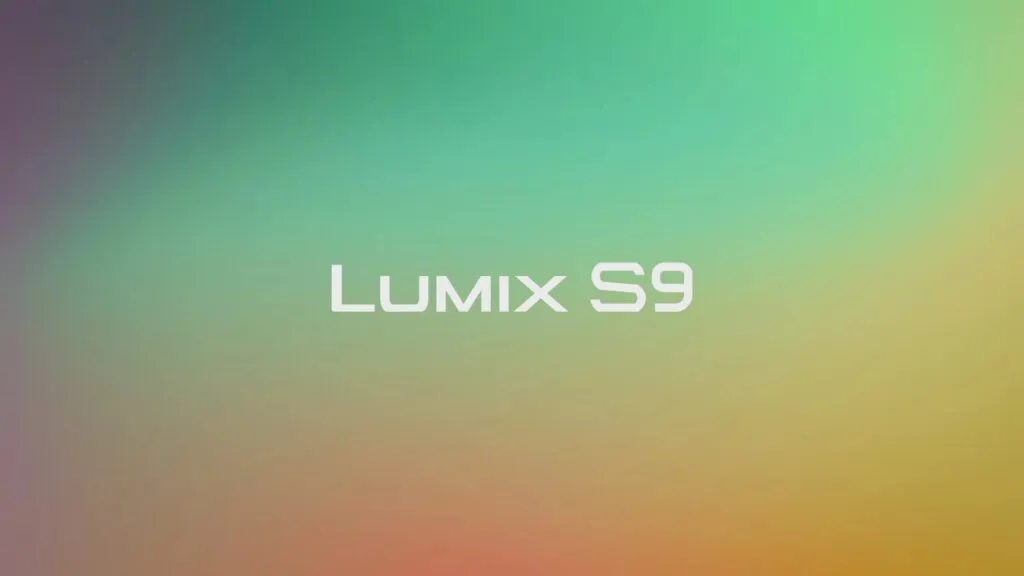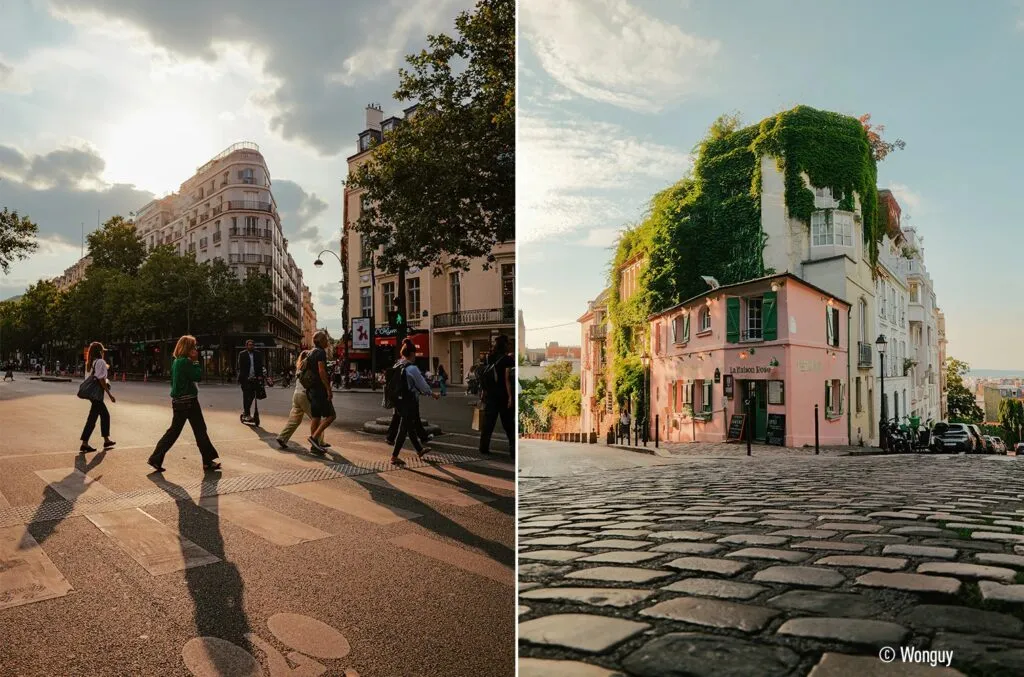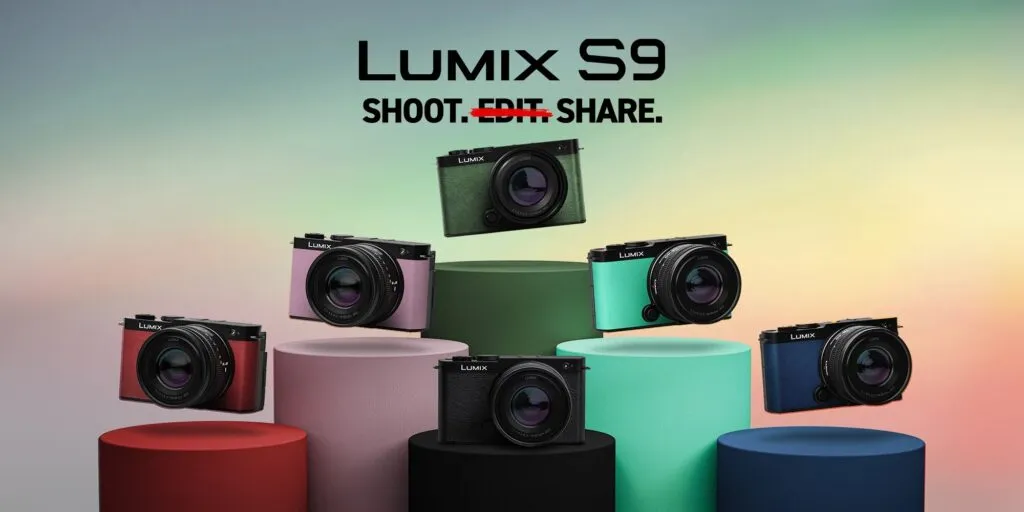
The Panasonic Lumix S9 has finally touched down, stirring up a very big deal in the land of mirrorless cameras. So, is this really a revolutionary camera, or just another overhyped piece of tech which will actually do little but lighten your wallet? Let’s strip the marketing layers from the S9 and have a look with a seriously critical, no-holds-barred approach.
Cut the Hype, Let’s Talk Real Performance
Let’s get down to business: the Lumix S9 is a very interesting camera, filled with exciting features and some dubious design decisions. It is far from perfect, and whether or not it’s the right fit for you will depend entirely upon your priorities as a photographer or videographer.
Image Quality: The Heart of the Matter
The Lumix S9 comes fitted with a 24.2-megapixel full-frame CMOS sensor. Let’s get the obvious out of the way first: full frame is good. It allows for shallower depth of field, excellent dynamic range, and superior low-light performance compared to crop-sensor cameras.
- Real-World Performance: You should get crisp images with a nice amount of detail in real-world usage. RAW files hold a lot of information, thereby offering extensive latitude in editing. The sensor does fairly well in low-light shooting, maintaining a reasonably low level of noise up to around ISO 6400. Beyond that, you start to see some degradation, but it’s still usable depending on your needs.
- Dynamic Range: The dynamic range is competitive; it gives you flexibility in recovering details in both shadows and highlights. It is not class-leading in this particular area, but still very capable for most photography needs. You can expect about 14 stops, which is great, but it is not pushing any significant boundaries here.
Example: Compared head-on against the Sony a7 IV, the Lumix S9 doesn’t offer the same degree of noise control at extremely high ISO settings; that may well not be an issue for many users, though, and it’s a gap rather than a chasm.
The Sensor Size: It Matters, But It’s Not Everything.
It’s no guarantee of incredible images, but the full-frame sensor does help. Really, it’s all in the marketing jargon: a full-frame sensor will inherently do better with light compared to smaller sensors – and that’s a good thing, not bad.
Lens System: The L-Mount Ecosystem, A Double-Edged Sword
The Lumix S9 uses the L-mount, an alliance between Panasonic, Leica, and Sigma. That gets you access to a decent number of lenses, but let’s be clear: the L-mount is nowhere as varied as either the Sony E-mount or Canon RF mount.
- Upside: Having quality lenses from three different brands is undeniably a plus. Everything from very sharp, expensive Leica glass to more budget-friendly options from Sigma and Panasonic, the choices are varied. Some of the Sigma Art L-Mount lenses are simply phenomenal regarding sharpness as well as construction quality.
- The Downsides: The lens selection, while very good, still lags behind Sony and Canon. You just won’t see as much variety and the prices are often significantly higher, particularly when it comes to Leica lenses. Examples of more budget-friendly native options:
Examples:
- Panasonic LUMIX S PRO 50mm F1.4 – A super high-end lens featuring really exceptional sharpness and bokeh, but its price is correspondingly very high.
- Sigma 24-70mm f/2.8 DG DN Art: A versatile and very sharp zoom, a workhorse lens for many photographers.
The Reality: If you’re already deeply invested in the Sony or Canon systems, the lens ecosystem alone may be a deal breaker.

Autofocus Performance: The Achilles Heel?
The autofocus (AF) system on the Lumix S9 is…adequate. It’s not class-leading and it doesn’t really push any boundaries.
- Speed and Accuracy: The S9 uses a contrast-detection autofocus system (with DFD tech), rather than phase-detection systems as many competitors do. That means relatively slower and sometimes less confident AF, particularly in low light or with fast-moving subjects.
- Real World Pains: The S9 does some excessive hunting for focus under difficult conditions. Continuous AF really struggles to stay focused. Again, mainly a sports and wildlife photographer probably wouldn’t love it. It is good to go with static subjects, no question.
- Face and Eye Detection: It does contain face and eye detection but rather sporadic it is compared with the competition-especially if it’s a subject on the go.
Examples are numerous: the autofocus tracking and speed of the Sony a7 III or Canon R6 are way superior to the S9. That is because these cameras use a hybrid phase detection AF system that, generally speaking, is much better than any contrast detect system.
Why is this a problem? It’s a core expectation in today’s market, and any system that can’t hack it is going to be an issue for a lot of users. You really shouldn’t have to think twice about whether your camera is going to focus, period, and the S9 just can’t keep up with its peers.
Operating Experience: Design Decisions That Will Make You Cringe
Some of the design choices for the Lumix S9 are frankly out of your mind.
- Ergonomics: The camera’s grip is not comfortable, especially for people with larger hands. It feels awkward, particularly with larger lenses. Not having a proper grip feels like Panasonic cheaped out, and it is really not comfortable for long shooting sessions.
- Button Layout: The layout of the buttons is also very weird; controls are scattered in an illogical manner. It’s just not intuitive to use; it takes time getting used to, and that is an unnecessary hurdle.
- No Electronic Viewfinder: This is the big one. It’s as if not having an EVF is taking a major step back with regards to camera functionality. For many photographers and videographers who usually work under bright sunlight conditions, the lack of an EVF in this camera will be a no-go.
- Touchscreen: The LCD touch screen is decent and it’s nice to have but it’s not enough to compensate for the glaring issues.
The Reality: The ergonomics are not good, the buttons are confusing, and the lack of an EVF is a significant drawback. The design of this camera is simply not as well-thought-out as its competitors.
Video Features: A Mixed Bag of Good and Bad
Although not perfect, the Lumix S9 is nonetheless an extremely capable video camera with a plethora of features aimed at facilitating production. This camera is able to shoot 6K at 30p, 4K at 60p, and a decent array of framerates for slow-motion capture. It has a good variation in codec options, including the capability to record to an external recorder via HDMI.
- 10-bit Recording: This is, in fact, a big plus for the camera, providing the flexibility in post-processing with more color information.
- No In-Body Image Stabilization: This is, in fact, a huge problem. The camera lacks in-body image stabilization. This will make this camera less versatile for video and photography since you would have to wholly depend on lens-based stabilization, or external stabilization, which is not desirable.
- Overheating: Overheating could become a problem with the S9, especially in 6k recording and in hot conditions. This will also limit your ability to shoot extended takes.
Example: The Canon R6 Mark II, for one, does not suffer with the same limitations in IBIS and overheating and sits in the same price bracket, making it a more suitable and flexible option.
Reality: Video in the Lumix S9 is decent, hugely hampered, though, because of the video potential by no IBIS and overheating problems. It somewhat becomes counter intuitive having 6k recording capabilities but then overheat the camera in a couple of minutes. No IBIS, too assist in the smoothing out, that 6K option is only there for show.

Portability and Durability: Small but Fragile
The Lumix S9 is compact and lightweight, which makes it great for transportation, though it limits certain factors.
- Compact Size: Yes, its small size does make it much easier to take around when traveling, but at the cost of usability, grip, and no EVF.
- Durability: The S9 is not weather-sealed and doesn’t feature any form of dust or moisture resistance. You really have to be very careful with it if you plan on shooting anywhere other than in controlled environments.
- Build Quality: While the overall build is decent, it does not feel quite as robust as some competitors, which could be an issue with day-to-day use.
Reality: While compact, the S9 feels fragile, and with no weather sealing, you’re really limited on where and how you can shoot.
Battery Life: Another Weak Point?
The Lumix S9’s battery life is really, really disappointing.
- Limited Capacity: It’s a small battery, and it does not offer too good battery life.
- Battery performance-In practical use you will be able to get around 300 shots or less and much less in case you record videos, and for that, you will have to carry a plenty of spare batteries along with you. You can charge the camera via a USB however it doesn’t charge that quick so charging might take some time especially when you happen to use incorrect high-speed chargers.
Example: The Sony a7 III or the Canon R6 will easily give 600+ shots on one battery charge and are more reliable in case of longer shooting. That is a fact.
The Reality: Yes, the battery life is not great, and if you plan to use this camera for extended shoots, you’d better budget for a few extra batteries.
Value for Money: The Ultimate Question
Is the Lumix S9 worth the money? Let’s break it down.
- Price: The Lumix S9 is competitively set among other full-frame cameras, but you may not be getting the same features that the competition is offering for a similar price point.
- Features vs. Price: You are paying likely a premium for the full-frame sensor without getting the most value from other features that may be or will be fundamental in your photography. Considering autofocus, ergonomics, lack of an EVF, and IBIS, there is some competition at this price point, with the Sony a7 III and Canon R6 offering a better overall package with improved autofocus, ergonomics, and general ease of use.
Reality: The S9 is probably not a very good value-for-money proposition with several other offerings competing with it. It has its pros, but they are pretty heavily undermined by the cons.

Pros and Cons: At a Glance
Pros
- Full-Frame Sensor: A 24.2 MP sensor featuring excellent image quality and dynamic range.
- 6K Video Recording: The camera will be capable of shooting 6K 30p video, which could come in handy for some videographers.
- Compact Size: Its reduced size makes the camera much more carry-friendly.
- L-Mount System: Access to a respectable set of lenses from Panasonic, Leica, and Sigma.
- 10-bit Colour: 10-bit recording in video offers excellent flexibility for post-production colour work.
Cons
- Subpar Autofocus: The contrast-detection AF system is slow and unreliable, especially in low light and with moving subjects.
Poor Ergonomics: The grip is uncomfortable, and the button layout is not intuitive. - No Electronic Viewfinder: A big omission that decreases the usability considerably, especially in bright light conditions.
No In-Body Image Stabilization: This will surely limit your creative options and make it less flexible as an all-round camera system. - Limited Battery Life: Extra batteries are going to be needed if you want long shooting with this camera.
- No Weather Sealing: It limits the robustness of this camera.
Overheating Issues: May overheat in video recording mode which could limit your use case. - Overpriced: It is overpriced compared to other competing cameras that have more features.
Buying Advice: Who Should (and Shouldn’t) Buy the Lumix S9?
Who Should Consider Buying the Lumix S9?
- Photographers valuing image quality and not needing a very fast autofocus system: If you are a landscape, portrait, or otherwise static subject shooter, it may be worth it for you.
- Videographers working only in a studio environment, as well as with stabilized lenses: Yes, it may be good to go for video if you shoot in studio environments, have stabilized lenses, and don’t need IBIS .
Who Should Avoid the Lumix S9?
- Sports and wildlife photographers: Slow and unreliable autofocus will constantly frustrate you.
- For IBIS, the need is great for photographers and videographers: without in-body stabilization, you’ll be reliant on lens-based IS or external stabilization – not too desirable. It is also quite necessary for any user who wants a well-built, weather-sealed camera as a lack of weather sealing tends to make a camera fragile and extra caution must be taken when shooting in harsh conditions.
- People who value good ergonomics and ease of use: the uncomfortable grip, awkward button layout, and lack of an EVF make this camera a pain to use.
- Users who need long battery life: the poor battery life will hinder long shoots and you will need to carry spare batteries.
Users on a budget: there are better options for less money on the market.

The Verdict: Should You Buy The Lumix S9?
The Lumix S9 is a flawed camera that could have been so much better. It has the potential, but poor ergonomic choices heavily undermine it, along with a weak AF system and no IBIS at this price point. Image quality from the full-frame sensor is good, and 6K video capability is a positive, but these features are not enough to compensate for the camera’s weaknesses.
So my unapologetic recommendation would be this: unless your needs exactly align with this camera’s very narrow strengths-and you can learn to live with its many, many weaknesses-most users will want to look elsewhere. The Lumix S9 is a frustrating camera that constantly leaves you wanting more considering the price point and its competition. There are better options available right now.
Final Thought: The Lumix S9 feels like it’s trying to be too many things and ends up being mediocre at most of them. It’s not a terrible camera by any means, but it really could have been so much better, especially with its price and the competition as it stands.
Is it a game-changer? Absolutely not. It’s more like a missed opportunity.
